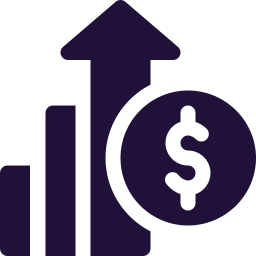As we saw in permanent life insurance explained, the main benefit of investing in these products are the ability to build up a type of investment account called cash value with limited risk of investment loss. as well as the ability to multiply your portfolio through secured loans.
However, funding a permanent life insurance policy works differently than funding a normal investment account, and this article we will break down how it works to make it simple for you.
Many different variables goes into deciding each premium, and in this article we will look at the most important ones to help you understand how you may best use it.
This article is written as general education, and should not be considered as personal financial advice. If you would like personal guidance with life insurance, you can schedule a time to talk with one of our experts.
Permanent life insurance funding
To understand how life insurance pricing works, it is helpful to first understand how permanent life insurance policies are funded. When money is paid into the policy, it is used both to pay for the insurance on your life, or your death benefit, as well as to build up the cash value.
If you die earlier than your life expectancy, the money that goes towards covering your insurance will fund your death benefit, and if you die at your life expectancy, the money in your cash value will fund your death benefit.

The amount that goes towards the insurance versus the amount that will go towards the cash value will depend on a couple of different things. Most notably, these are the age and health of the insured, the size of the death benefit of the policy, the expense ratio of the insurance company, and the amount of optional cash value contributions.
Underwriting and risk ratings
When getting a permanent life insurance policy, a customer has to go through underwriting, which involves looking at the profile of the customer to decide their risk of dying.
The most important factors looked at during the underwriting are age, sex, living area, and smoking status, but other factors like medical, driving, and credit history are also considered.
Traditionally, the customer has to take a quick medical exam during the underwriting to confirm their health details. However, in recent years, alternatives has arrived, such as no-medical policies that are underwritten without exams, or accelerated underwriting policies where some applicants can skip their medical exams.
At the end of underwriting, the applicant is given a certain risk rating, and with that, an associated pricing quote for the cost of insurance. The younger and healthier the applicant is, the lower prices will be.
Size of death benefit
Secondly, the price depends on the death benefit amount included in the policy. This is usually 10-15 times the yearly income of the insured person, but can be either higher or lower depending on the preferences of the customer.
With a smaller death benefit, the cash value can build up quicker, and with a larger death benefit, the cash value will build up slower.
Expense ratios
Finally, the cost of insurance will differ between different insurers, as they have different costs associated with acquiring, underwriting, and servicing customers.
This is expressed through expense ratios, where a lower expense ratio signifies a more efficient business and a lower cost of insurance.
This means that the lower the expense ratio, the quicker cash value can build up in the policy, all else being equal.
Optional cash value contributions
Lastly, once a base price for a policy has been established, it is possible to contribute extra funds to boost the growth of the cash value.
These contributions are called Paid Up Additions, and are a great way to build the cash value quicker, as these contributions is added directly to the cash value.
However, there is a limit on how high these contributions can be in order for the policy to still qualify for tax advantages.
Insurance companies and their agents are used to dealing with these rules, and can help customers contribute the maximum possible amount without being disqualified for tax advantages.

Timing of payments
Once a person has been given a risk rating, and decided on a specific death benefit amount as well as an insurer with a low expense ratio, the final thing that will influence the size of the premium is for how long it will be paid, as well as how often it will be paid.
The time period over which the policies are funded is an important aspect of the financial performance of the policy, and is called the paid-up period.
Most policies are funded over a limited amount of years, usually ten or more, but they could also be funded through a one time payment or until the owner dies.

The longer period the policy is paid over, the lower the payments will be, as the policy will have longer time to accumulate.
However, the shorter period the policy is paid over, the lower the cost of insurance will be, and the higher the cash value growth will be.
To stop people from abusing life insurance for tax purposes, the IRS have imposed rules around the minimum amount of time a policy needs to be funded for in order to enjoy the tax advantages associated with this asset class.
For a policy to qualify for tax advantages, it needs to be funded for at least 7 years.
Because of these tax laws, most people who wishes to use permanent life insurance as an investment makes sure to fund it for about ten years, as this enables them to build up a cash value as quickly as possible while still maintaining the tax benefits of the asset class.
Life insurance are usually paid monthly, but could also be paid quarterly or yearly.
Naturally, the more seldom it is paid, the bigger each payment will be.
Additionally, the more often it is paid, the more time will be available for the money to grow inside of the cash value.
Beyond these factors associated with life insurance policies, there are other ways to hack the costs of investing while simplifying underwriting, such as building a portfolio of life insurance policies.
Conclusion
While there are a lot of factors that goes into life insurance pricing, this article went over the most important ones and the strategies that can be used to get the best results.
However, the most important factors that goes into deciding the size of the premiums are age and health, the size of the death benefit, the expense ratio of the insurance company, the time period which the policy is paid up in, and the preference for building cash value.
.png)




.png)



.png)


.png)









.png)
.png)
.png)



.png)


.png)
%20copy.png)
%202.png)




.png)
.png)
.png)